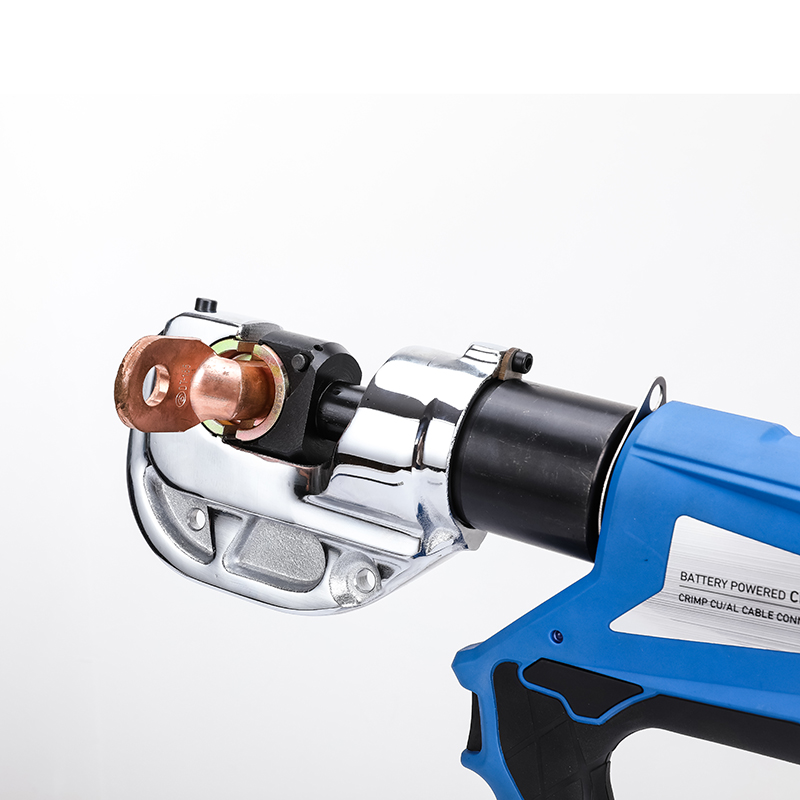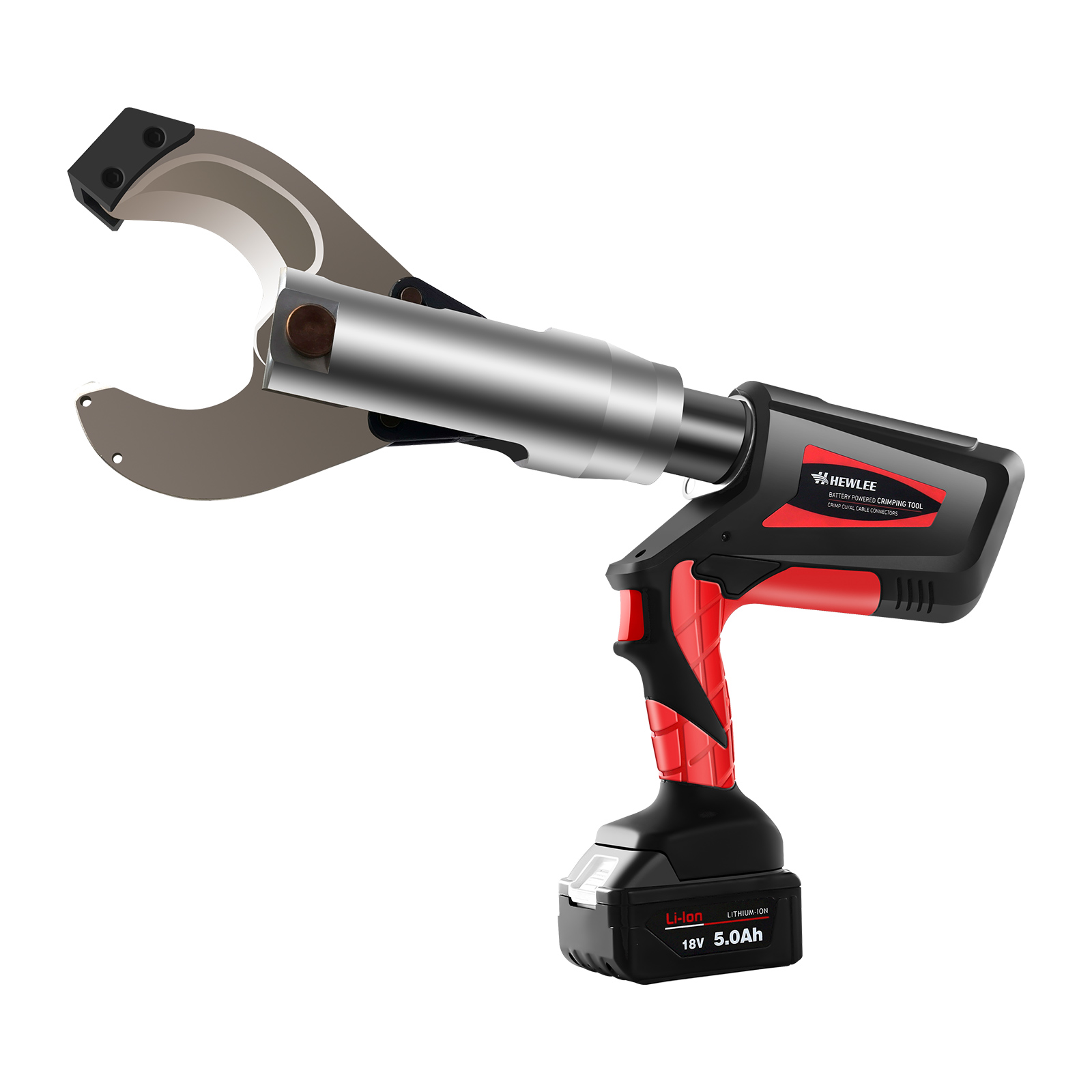Where the rubber meets the road, the value of the electric press brake for Summit Laser is in the machine’s speed. Images: Summit Laser
Summit Laser and Manufacturing, Elora, Ont., regularly invests in new equipment to improve the precision, efficiency, and quality of its production and output. Its most recent investment is a 130-ton SafanDarley 130T Ultra electric press brake. As company president Troy Grose explained, it adds speed and precision to the shop floor. C Frame Hydraulic Press

Summit Laser was founded in 2017 by father and son team Gordon and Troy Grose, but the history of the company and its capabilities is much older. The Grose family is connected to Husky Farm Equipment, which was founded by Troy’s grandparents, Ray and Ruth Grose. Gordon ran the laser department at Husky for many years. In 2016, Husky looked for new and sustainable ways to ensure the continued success of its third-generation family company. When the opportunity arose to purchase a 16,000-sq.-ft. factory in Elora (a short drive from Husky’s main facility), a plan developed to move the company’s laser machines. Though incorporated separately, Summit Laser still works closely with Husky Farm Equipment.
Since its inception, Summit Laser has invested in upgrading its laser and press brake capabilities. While it still runs two workhorse CO2 lasers, two years ago it invested in its first 8-kW fibre laser from Mitsubishi. In addition, it purchased a Baykal hydraulic brake, a LISSMAC deburring machine, and most recently the SafanDarley brake through Westway Machinery.
“We had purchased a smaller 36-ton electric brake, thinking that it would be useful to handle smaller parts quickly,” said Troy Grose. “But when we had some issues with our hydraulic brake in terms of getting spare parts, I saw that the small electric wasn’t going to cut it. We knew we’d be able to process a lot more on a larger electric. As a job shop, I realized it would be more valuable to have a larger brake.”
Although Grose saw many advantages to an electric brake, the first things that came to mind were its ease of use and quiet operation.
“There’s obviously some power savings using an electric, but for me it’s just less maintenance and more comfortable to use because it’s so much quieter,” he said. “In terms of maintenance, you really don’t have to do anything with it. There’s no concern with oil leaks and nothing to adjust. And I find it more enjoyable when you are operating it because you don’t have all that extra noise. We’re a really clean shop, so it’s nice when we can get a machine that is quieter and cleaner.”
But where the rubber meets the road, the value for the business is in the machine’s speed.
“Our hydraulic Baykal is very versatile, and I do like it,” said Grose. “It has been a great machine for us. We bought it with upgraded controllers, so we do everything in 3D on it. It’s just a workhorse and has never really stopped running.
“But with the electric, the speed is just so much greater,” he continued. “There’s a lot of time savings there. I know that there were certain part runs we were doing on the hydraulic press that would take all day. When we moved those over to the electric brake, it knocked production time down to about four hours. That’s a huge time savings for a smaller shop. I’m always striving to be as efficient as we can with what we have. How do we get more done with the people that we have? Given how difficult it can be to find new talented workers, more efficient machines are often the answer.”
As a job shop, Summit Laser runs everything from carbon steel to stainless and aluminum, from 0.005 in. up to 1 in., although Grose said that the majority of production is between 3/16 and ¼ in.
Some of the bells and whistles on the Safan press brake have been more useful than expected, such as the 6-axis backgauge, which gives the operator more flexibility in part setup.
In terms of how bending jobs are routed, he noted that it’s mostly based on part design.
“When I bought the new brake, I also invested in Autopol software, which allows me to post parts to both machines at the same time,” he said. “I’ve started to program all the files in the office, which I could do before, but this program is just better and more powerful than the system I was using before. I send jobs to each machine based on which they are suited to.
“I generally send jobs to the electric press brake if we need to maintain high tolerances, and any jobs that are well designed from the outset by a client’s engineer or whoever sends me the files—I don’t want to put through any jobs to that machine that have a risk of damaging the tooling. We see that a fair bit—parts designed in a way that isn’t optimal. I reserve those jobs for the hydraulic brake because the tooling on that is somewhat more forgiving.”
The difference in tooling design between the two machines does affect bending decisions on each.
“I’ve got hydraulic clamping on the electric, using Wila tools, and you’re more limited on height with that setup,” said Grose. “On the hydraulic brake I have European-style precision manual clamping, so you can go in between those clamps, which makes it easier to do things like box bending. Sometimes you may need a certain V width that's better suited on one machine than the other. That's one thing that I did find is that the tools are all different between Wila-style and European. When you order those tools, they come in different configurations and different tip radiuses and different V widths. So sometimes it's better suited on one machine than the other just to get the right radius.”
When it comes to time and complexity, though, Grose tries to use the electric brake.
“If I know I’m going to have to do 500 pieces, I am going to do all I can to set that up on the electric brake for the time savings,” he said.
When purchasing more advanced machinery, it’s common for some capabilities that seem ideal for production to go underused. Grose’s software and brake investments are no exception.
“The Autopol software came with a batch functionality that sounded really good on paper,” he noted. “It allows you to drag and drop a number of part files at once and it will open them up, flatten them out, and then you can pick which machine you want to put them on, pick your tooling, that sort of thing. I don’t use that functionality much. I find I am processing each part one at a time and it’s still fairly quick but allows me 100 per cent control over each step as I go.”
Conversely, some of the bells and whistles on the Safan electric press brake have been more useful than expected, such as the 6-axis backgauge.
Having both a hydraulic and electric press brake allows Summit Laser to allot parts according to needs in terms of tonnage and production speed. Thus, having the hydraulic press for parts like the Strenx100XF high-strength steel transition cone on the upper right is important, while thinner materials can be moved quickly through the electric brake.
“I didn’t have that functionality on our other electric brake or our hydraulic, and I really didn’t think I was going to use it that much,” Grose noted. “But now that I have it and use it in conjunction with Autopol, it’s really useful. It makes it virtually limitless on how you want to set up your parts. It’s a real time saver. For instance, if we’re doing a cone shape, we’ll still laser etch where we’re going to bend as a reference, but with the 6-axis backgauge it’s easy to position and the dimensional accuracy is right on through 10 or 12 hits. Previously, we’d bring the ram down close to the piece and line up the etching visually. This is much more accurate.”
Grose isn’t sure what his next investment will be, but the company is always looking to the future, thinking about what technology will better serve its customers and support its employees.
Editor Robert Colman can be reached at rcolman@canadianfabweld.com.
Summit Laser and Manufacturing Ltd., www.summitlaser.ca
MC Machinery Systems Canada, www.mcmachinery.com
Westway Machinery, www.westwaymachinery.com
With the addition of a fibre laser and newer press brakes, Summit Laser has taken steps to make it easier to produce very precise parts faster. The shop added to that capability in the finishing department with the purchase of a LISSMAC SBM-XS 300 deburring machine.
“We use the machine for deburring stainless and aluminum parts,” said Grose. “It gives us a nice, consistent finish. We still do a lot of hand deburring but you cannot get that same consistent finish on every part using an angle grinder. The LISSMAC just creates a better-quality product, and the operator is not exerting himself in the same way as if he were doing the work by hand.”
With the addition of a fibre laser and newer press brakes, Summit Laser has taken steps to make it easier to produce very precise parts faster. The shop added to that capability in the finishing department with the purchase of a LISSMAC SBM-XS 300 deburring machine.
The machine has a working width of 12 in. and can handle parts between 1 and 15 mm (0.04 to 0.59 in.).
“The other benefit is the dust removal a machine like this provides,” said Grose. “Because it’s getting vacuumed out and processed through a proper filtration system, you don’t have the air quality concerns that hand grinding creates. We try to keep our shop as clean as possible, and this helps with our efforts.”
Toronto, M1R 0A1 Canada
See More by Rob Colman
Robert Colman has worked as a writer and editor for more than 25 years, covering the needs of a variety of trades. He has been dedicated to the metalworking industry for the past 13 years, serving as editor for Metalworking Production & Purchasing (MP&P) and, since January 2016, the editor of Canadian Fabricating & Welding. He graduated with a B.A. degree from McGill University and a Master’s degree from UBC.
Read more from this issue
Subscribe to Canadian Fabricating & Welding
Find Canadian Fabricating & Welding on Facebook
Find Canadian Fabricating & Welding on Twitter
Keep up to date with the latest news, events, and technology for all things metal from our pair of monthly magazines written specifically for Canadian manufacturers!
Easily access valuable industry resources now with full access to the digital edition of Canadian Metalworking.
Easily access valuable industry resources now with full access to the digital edition of Canadian Fabricating & Welding.
Set your creative genius free with WARDJet technology. Our machines are renowned around the world for superior industrial-grade systems that cut through the toughest material. See how easy it is to produce beautiful quality custom shapes when cutting architectural glass.
© 2024 FMA Communications Canada, Inc. All rights reserved.

Pex Pipe Pressing Tool Not yet registered? Sign up